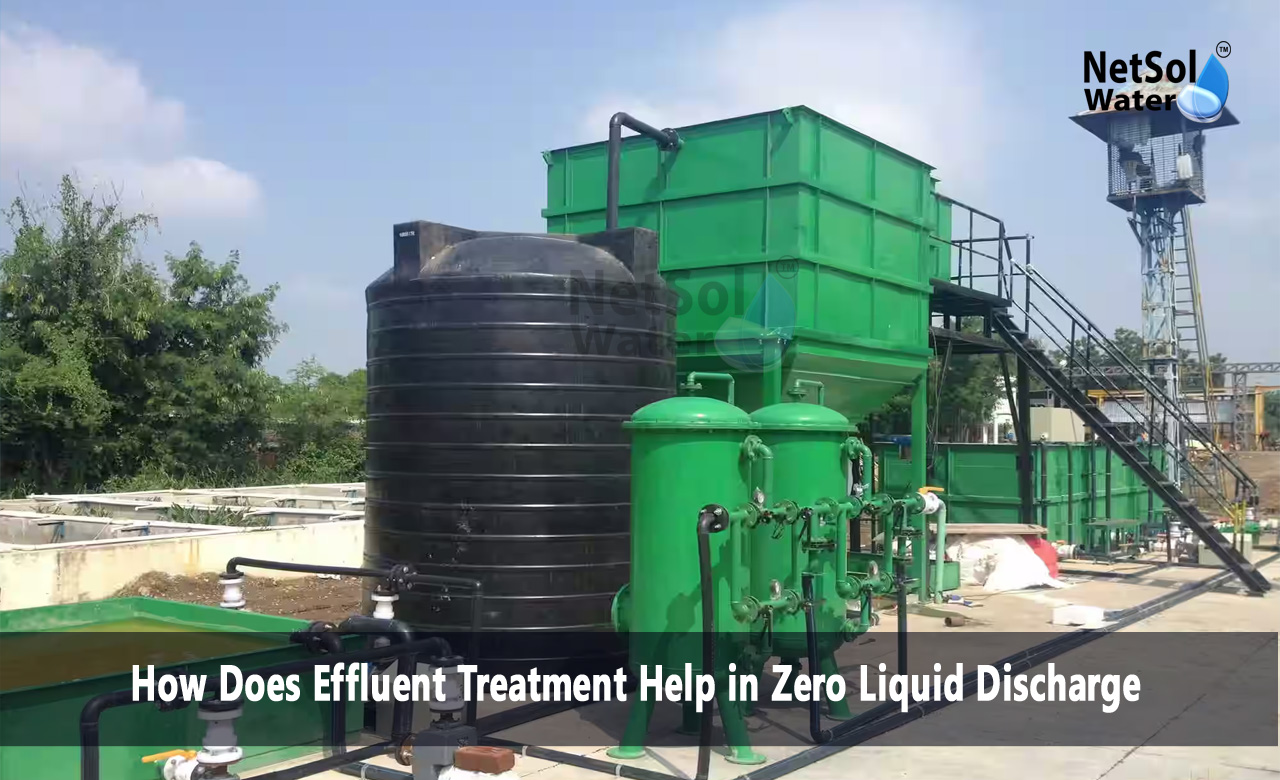How Does Effluent Treatment Help in Zero Liquid Discharge (ZLD)?
Effluent treatment stands at the core of any Zero Liquid Discharge (ZLD) plan. It removes harmful particles and dissolved substances from industrial wastewater. Netsol Water is a leading manufacturer that provides full scale systems for efficient water reuse and discharge free solutions. This blog discusses how effluent treatment enables companies to meet ZLD goals. We begin by outlining key processes that transform wastewater into clean reusable water. Then we describe the advanced steps that ensure no liquid waste leaves the plant.
Effluent Treatment and Zero Liquid Discharge (ZLD)
Effluent treatment forms the base for any ZLD approach. It clears large solids and oils from raw water. It also balances pH and reduces toxicity in water streams. Let us have a look at some core stages that build this foundation
Primary Clarification: In primary clarification solids settle at the bottom under gravity. Then clear water rises to the top for further treatment. This step protects downstream units from damage.
Secondary Biological Treatment: This stage uses microbes to digest organic matter in water. It lowers biochemical oxygen demand and chemical oxygen demand. The result is water fit for advanced separation.
Tertiary Filtration: After biology the water moves through fine filters. These filters remove any remaining suspended particles. This cleans the water further for final polishing.Next the treated water enters specialty units that drive ZLD.
Membrane Separation Techniques
Membrane separation plays a crucial role in pushing treated water closer to ZLD targets. It splits water from dissolved salts and organics. Let us have a look at some common methods that deliver this outcome
Ultrafiltration: In ultrafiltration membranes trap tiny particles and microbes. This lowers suspended solids and bacteria counts. The clean water passes through under low pressure.
Nanofiltration: Nanofiltration removes multivalent ions and larger organics. It softens water and lowers hardness. This protects equipment in later ZLD steps.
Reverse Osmosis: Reverse osmosis uses high pressure to force water through dense membranes. This blocks most dissolved salts. The product water meets stringent reuse standards.
Membrane units work in series to raise water quality at each pass. This sequence readies water for thermal or crystallization stages in ZLD.
Evaporation and Crystallization Processes
Thermal steps lock in liquid recovery by turning water into vapor and solids. They form the final barrier to liquid discharge. Let us have a look at some key methods that seal this process
Single Effect Evaporation: This method heats brine once to vaporize water. The vapor condenses into pure water for reuse. It yields moderate energy savings.
Multiple Effect Evaporation: In multiple effects the vapor from one vessel drives the next. This cascade cuts energy use per unit of water recovered. The system boosts efficiency as it scales.
Crystallizer Units: After evaporation the concentrated brine enters a crystallizer. Solids form and settle out. The recovered salts can become saleable products.
These thermal units tie up any remaining water thus fulfilling the ZLD goal. They also produce byproducts that may add value to the operation.
Achieving Energy Efficiency
Energy use makes or breaks the case for a ZLD system. Smart design cuts power needs and costs. Let us have a look at some tactics that drive efficiency gains
Heat Integration: In heat integration waste heat from one step feeds another. This reduces fresh steam demand. It also trims the overall fuel bill.
Mechanical Vapor Recompression: This technology compresses vapor to boost its temperature and pressure. The hot compressed vapor then drives evaporation. It slashes steam consumption.
Renewable Energy Use: Solar thermal or biomass boilers can supply heat for evaporation. This shifts energy sources away from fossil fuels. It cuts greenhouse gas emissions too.
Optimizing energy use makes ZLD both greener and more cost effective. It also lowers operating budgets over the system life.
Meeting Environmental Regulations
Regulations push industries toward ZLD to protect water resources. Effluent treatment must meet strict discharge rules. Let us have a look at some regulatory drivers that shape ZLD projects
Discharge Permits: Agencies set limits on pollutants and flow rates. ZLD lets companies avoid these limits by sending no liquid out. This grants full permit compliance.
Water Scarcity Laws: Regions facing drought enforce strict use and recycling rules. ZLD helps industries stay lawful and reduce freshwater intake. It also supports local water conservation goals.
Waste Valorization Guidelines: Some regulators reward waste to resource initiatives. Recovering salts and solids can earn credits or tax breaks. ZLD systems often match these green policies.
Aligning treatment design with rules avoids fines and project delays. It also builds a stronger case for long term investment.
Conclusion
Zero Liquid Discharge (ZLD) brings clear benefits for industry and environment. Effluent treatment forms each step on the path to this outcome. Netsol Water is a leading manufacturer, guiding clients through every stage of water recovery. If you seek expert help in effluent treatment or wish to design a ZLD solution please get in touch today. Request a consultation to learn how your plant can achieve discharge free operation and sustainable water use.
Contact Netsol Water at:
Phone: +91-9650608473, Email: enquiry@netsolwater.com



